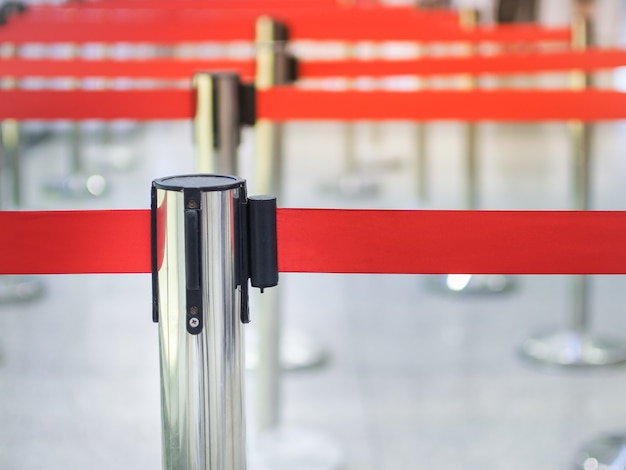The Dos and Don’ts of Crowd Control

Effective crowd control requires adherence to the dos and don’ts of crowd management. Dos include proper deployment of security personnel, strategic planning of check-in lines, and thorough event planning to anticipate potential dangers. Understanding the type of event and its unique crowd dynamics is essential to create a safe environment.
On the other hand, the don’ts include overcrowding spaces, ignoring dangerous situations, and neglecting to plan for emergencies. By implementing these dos and avoiding don’ts, event organizers can ensure a smooth and secure experience for attendees, mitigating risks and enhancing overall crowd safety.
Prioritize crowd control measures to guarantee a successful and well-managed event.
Here are the do’s and don’ts to ensure that crowds are managed safely and effectively:
Dos:
- Thoroughly plan and prepare for the event in advance, considering factors like expected attendance and venue layout as part of the planning process.
- Employ trained security personnel to monitor and manage the crowd, implementing a crowd control strategy to prevent crowd-crush situations.
- Maintain clear and open communication channels with attendees, providing them with necessary information and updates, including the emergency plan of action.
- Establish designated entrances, exits, and pathways to guide the flow of the crowd and prevent congestion, ensuring a safe situation.
- Regularly assess crowd density and take measures to avoid high-density crowds, which can lead to accidents, personal injuries, and property destruction.
- Use signage and visual aids to provide clear instructions and guidance to the crowd, minimizing aggressive, competitive, and selfish behaviors.
- Be prepared to respond to emergencies promptly by having emergency services readily available and trained staff who can handle tense situations and prevent physical confrontations.
Don’ts:
- Don’t use excessive force or aggressive tactics when dealing with crowd management situations, as this can escalate tensions and result in unnecessary harm.
- Avoid neglecting potential safety hazards, such as loose barriers or dangerous objects within the crowded area, to prevent accidental injuries.
- Don’t ignore signs of escalating tension or unruly behavior, as early intervention can help prevent tense situations from escalating further.
- Avoid making sudden changes to the event plan or procedures without clear communication with attendees, as this can lead to confusion and potential chaos.
- Don’t underestimate the importance of crowd control measures, as even seemingly calm crowds can quickly turn unpredictable and lead to unsafe conditions.
By following these dos and avoiding don’ts, event organizers and security personnel can effectively manage crowds, prioritize safety, and minimize the risk of personal injuries, property damage, and confrontations.
Basic Crowd Management Tips
Effective crowd management is crucial for ensuring the safety and smooth flow of crowds at events. By implementing proper crowd control procedures and techniques, event organizers can create a safe and enjoyable experience for event attendees. Here are some basic crowd management tips to consider:
-
Plan and Prepare: During the event planning process, designate a team of event staff and venue staff who will be responsible for crowd management. Ensure that guest service desks are strategically placed to provide assistance and information to attendees.
-
Crowd Control Management: Develop a comprehensive crowd control management strategy that considers the size of the venue space and expected attendance. This strategy should include the placement of crowd barriers, proper event signage, and clear communication channels.
-
Security Team and Emergency Personnel: Have a well-trained security team in place to handle crowd control situations and work closely with emergency personnel, such as paramedics or firefighters. Regularly coordinate and communicate with them to ensure a prompt response to any emergencies.
-
Contingency Plans: Prepare contingency plans for unexpected situations, such as sudden crowd surges or emergencies. These plans should outline the necessary actions for crowd control and provide guidelines for event staff to follow.
-
Crowd Management Expert: Consider consulting with a crowd management expert who can provide valuable insights and expertise in developing effective crowd control strategies tailored to your specific event.
-
Crowd Safety Managers: Appoint crowd safety managers who are experienced in overseeing crowd dynamics and can identify potential risks. These individuals can help implement crowd control techniques and ensure the safety of attendees.
-
Training and Communication: Provide training to event staff on crowd management techniques and procedures. Emphasize the importance of clear communication and coordination among staff members to maintain effective crowd control.
-
Monitoring and Adjustments: Continuously monitor crowd movements and behavior throughout the event. Make necessary adjustments to the crowd control strategy based on real-time observations and feedback from event staff and attendees.
-
Regular Communication Channels: Establish regular communication channels between event staff, security personnel, and emergency services. This ensures effective coordination and quick response to any crowd-related incidents.
-
Post-Event Evaluation: Conduct a post-event evaluation to assess the effectiveness of crowd management strategies and identify areas for improvement. Gather feedback from attendees, event contractors, and staff to gain valuable insights for future events.
By implementing these basic crowd management tips, event organizers can create a safe and well-managed environment for attendees. Remember, effective crowd control is a collaborative effort that requires careful planning, coordination, and continuous monitoring.
Prioritizing crowd safety and employing appropriate crowd management techniques will contribute to the success of your event and ensure a positive experience for all attendees.
Factors To Implement A Successful Crowd Control
Implementing successful crowd control is crucial for maintaining safety, order, and a positive experience in events or crowded spaces. By considering the following factors, event organizers and venue managers can effectively manage crowds and mitigate potential risks.
-
Planning and Preparation: A key factor in successful crowd control is thorough planning and preparation. This includes assessing the expected crowd size, understanding the nature of the event, and determining the appropriate venue capacity. By having a clear understanding of these factors, organizers can implement suitable crowd management strategies.
-
Crowd Flow Analysis: Analyzing the flow patterns of crowds is essential for efficient crowd control. This involves identifying entry and exit points, designing clear pathways, and strategically placing barriers or crowd control equipment. By optimizing crowd flow, organizers can prevent congestion, ensure smooth movement, and reduce the risk of accidents.
-
Trained Staff and Communication: Well-trained staff members play a critical role in crowd control. They should be equipped with the necessary knowledge and skills to manage crowds effectively. Additionally, establishing clear communication channels among staff members, security personnel, and emergency services facilitates rapid response and coordination in case of any incidents.
-
Crowd Monitoring: Continuous monitoring of crowd behavior is vital for the early detection of potential issues. This can be done through visual observation, surveillance systems, or technological solutions. By identifying signs of escalating tension, overcrowding, or hazardous situations, organizers can take proactive measures to maintain crowd safety.
-
Clear Signage and Information: Displaying clear and visible signage helps guide attendees and convey important information regarding exits, facilities, and emergency procedures. By providing adequate information, attendees can make informed decisions, reducing confusion and potential risks.
-
Emergency Preparedness: Developing comprehensive emergency response plans is essential for successful crowd control. Organizers should establish protocols to address medical emergencies, evacuations, or other unforeseen incidents. Trained personnel and communication systems should be in place to promptly respond to emergencies and ensure the safety of all individuals.
-
Crowd Engagement and Entertainment: Engaging the crowd through well-planned entertainment and activities can contribute to a positive crowd experience. By providing engaging and enjoyable experiences, organizers can help divert attention from potential issues and maintain a positive atmosphere.
-
Regular Evaluation and Improvement: Continuous evaluation and improvement of crowd control strategies are necessary to adapt to changing circumstances. Organizers should conduct post-event debriefings, gather feedback from attendees and staff, and identify areas for improvement. This iterative process helps refine crowd control techniques and ensures ongoing effectiveness.
By considering these factors and implementing appropriate crowd control measures, event organizers and venue managers can create safe and enjoyable environments for attendees. Prioritizing thorough planning, trained staff, effective communication, and continuous evaluation will contribute to successful crowd control, enhancing the overall experience for everyone involved. Read about a related blog on “Factors for Crowd Control.”
Learn more about the do’s and don’ts of crowd control
Understanding and implementing the dos and don’ts of crowd control is essential for maintaining safety, order, and a positive experience in events or crowded spaces. By following the dos, event organizers can effectively manage crowds, mitigate potential risks, and ensure a smooth flow of attendees. Thorough planning, trained staff, clear communication, and continuous monitoring are key factors in successful crowd control.
On the other hand, avoiding the don’ts is equally important. By refraining from using excessive force, neglecting potential safety hazards, or ignoring signs of escalating tension, organizers can prevent unnecessary conflicts and accidents. Clear signage, proper crowd flow analysis, and emergency preparedness play vital roles in creating a secure environment.
By prioritizing the safety and well-being of attendees, event organizers can create an enjoyable experience for all. Regular evaluation and improvement of crowd control strategies are necessary to adapt to changing circumstances and maintain effectiveness. Collaboration between event staff, security personnel, and emergency services is crucial for seamless coordination during crowd management situations.
Ultimately, effective crowd control requires a comprehensive approach that integrates planning, communication, training, and monitoring. By implementing the dos and avoiding the don’ts, organizers can create an environment where attendees can safely and confidently participate in events, fostering memorable experiences for everyone involved.




